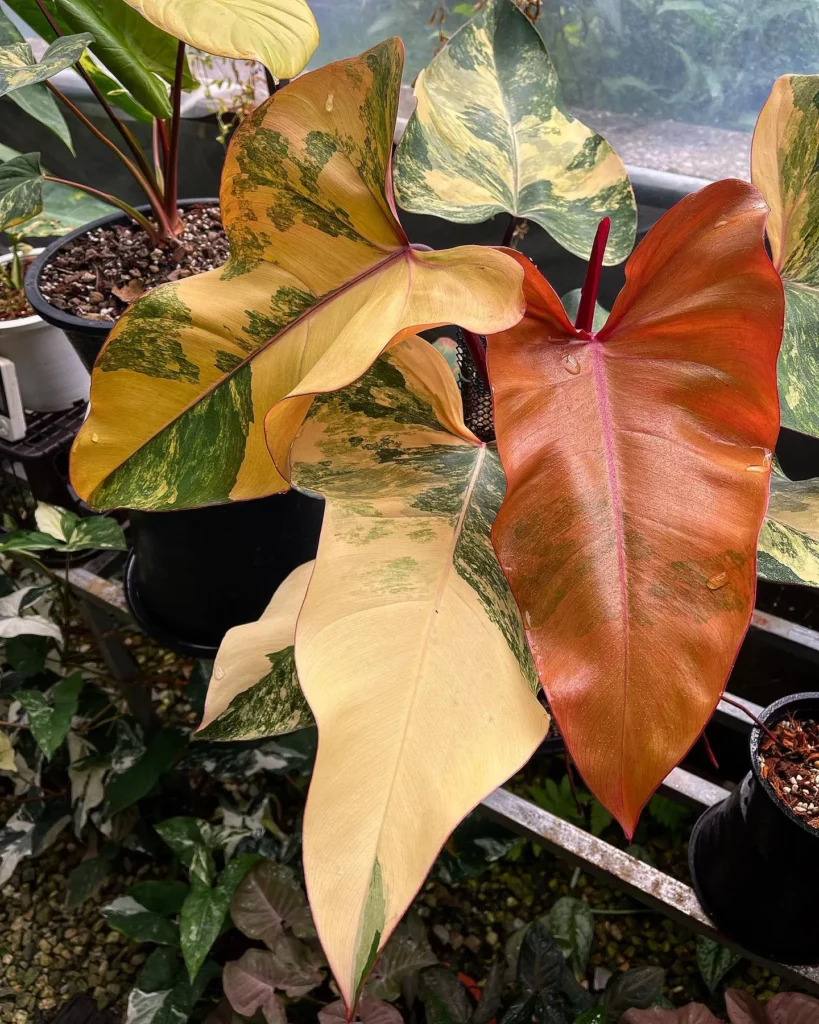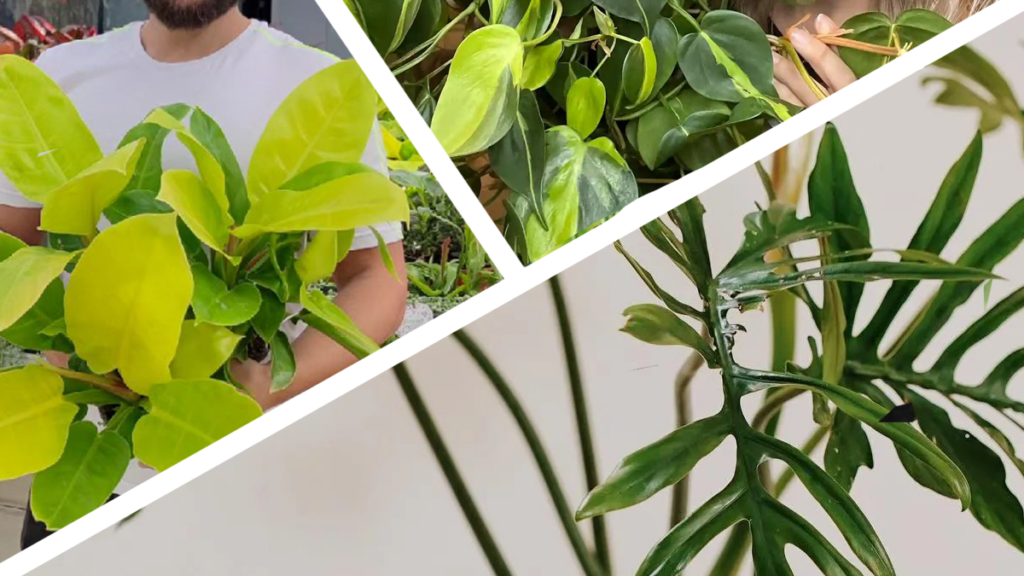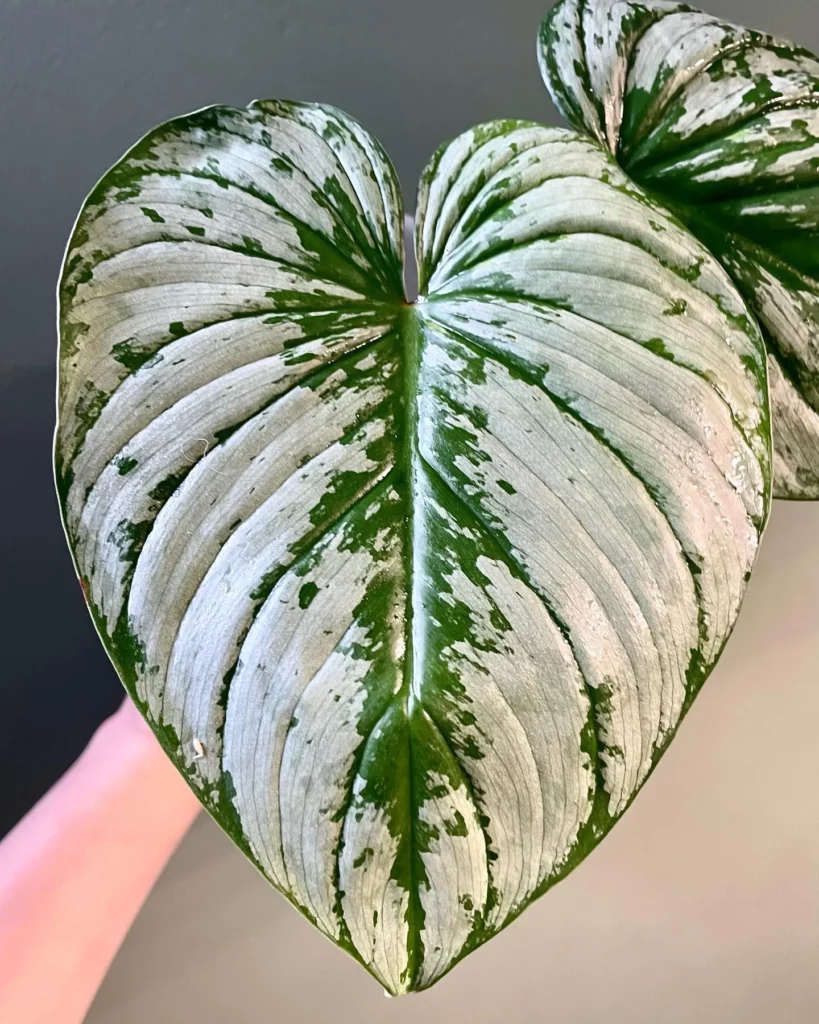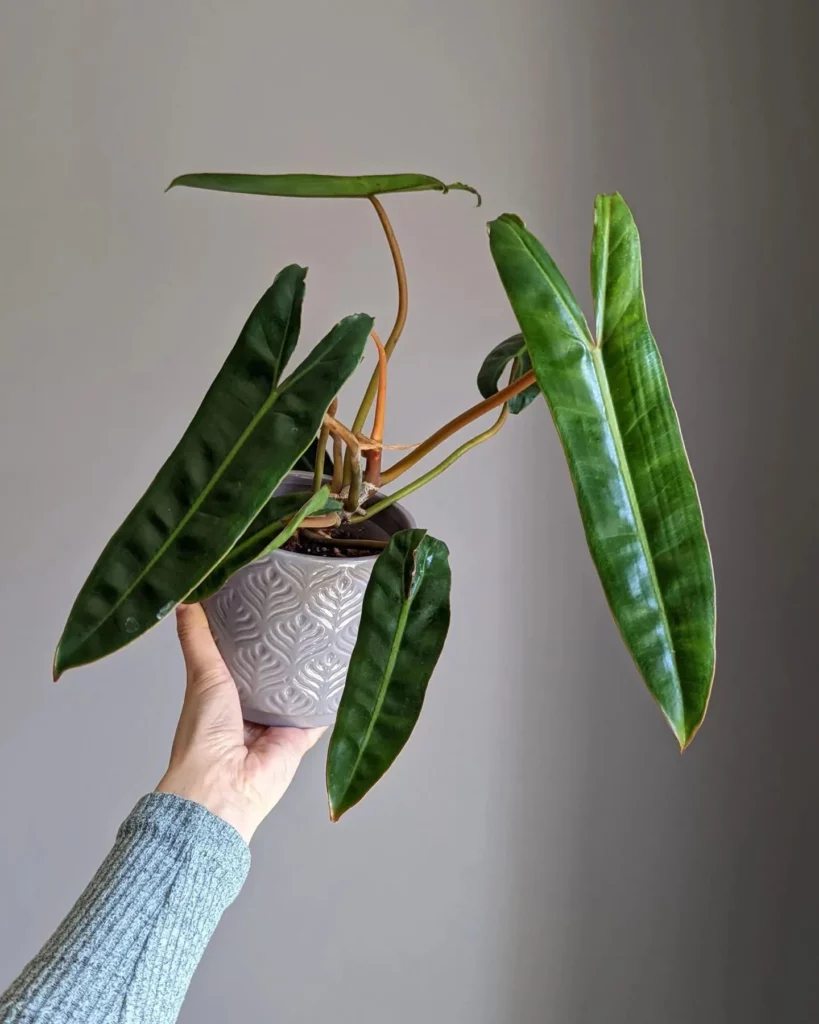Welcome to our comprehensive care guide for the stunning Red Emerald Philodendron, also known as Philodendron erubescens. This gorgeous houseplant will bring a pop of red-hot style to any corner of your home. Whether you’re a seasoned plant parent or just starting your green journey, this guide will walk you through all the essential aspects of caring for your Red Emerald Philodendron.
From understanding its unique appearance and light requirements to mastering watering, fertilizing, potting, propagation, and troubleshooting common pests and diseases, we’ve got you covered. By following our expert tips and recommendations, you’ll have your Philodendron Red Emerald thriving and displaying its vibrant foliage in no time.
Key Takeaways:
- Philodendron Red Emerald, or Philodendron erubescens, is a stunning houseplant with glossy green leaves and vibrant red coloration.
- It can thrive in both low and bright, indirect light, but direct sunlight should be avoided as it can scorch the leaves.
- Water the Red Emerald Philodendron when the top inch of soil feels dry and use room temperature, distilled, or filtered water.
- Choose well-draining soil and a suitable pot for potting your Red Emerald Philodendron, ensuring good drainage and appropriate root space.
Appearance of Philodendron Red Emerald



Philodendron Red Emerald, also known as Philodendron erubescens, showcases glossy green leaves with a velvety texture. These leaves can reach lengths of up to 12 inches, displaying a stunning color range that includes deep green, bronze, burgundy, and even vibrant red hues. The captivating red coloration is attributed to the presence of chlorophyll, carotenoids, and anthocyanins, creating a tropical plant cultivar that is visually striking and highly sought after for indoor gardens.
Light Requirements for Philodendron Red Emerald



Philodendron Red Emerald, or Philodendron erubescens, is a versatile houseplant that adapts well to different lighting conditions. It can thrive in both low light and bright, indirect light environments, making it a great choice for various areas of your home.
In low light conditions, the plant will produce larger leaves to capture as much light as possible. These leaves contain an abundance of chlorophyll, which is essential for the plant’s photosynthesis process.
On the other hand, in higher light conditions, the plant will produce smaller leaves. This adaptation helps to reduce the risk of photooxidative damage, ensuring the plant’s overall health and longevity.
While Philodendron Red Emerald is adaptable, it’s important to avoid placing the plant in direct sunlight. Direct sunlight can cause the leaves to become scorched and damaged.
To provide optimal light conditions for your Philodendron Red Emerald, place it in a spot with bright, indirect light. This could be near a north-facing window or a few feet away from an east- or west-facing window.
If you don’t have access to natural light, you can supplement with artificial grow lights. LED grow lights are a popular choice as they provide the right spectrum of light for photosynthesis without producing excessive heat.
Watering Philodendron Red Emerald



To keep your Philodendron Red Emerald healthy, it’s important to water it correctly. This stunning houseplant prefers consistently moist soil, but be careful not to overwater it or let the soil become waterlogged. To determine when it’s time to water, check the top inch of soil with your finger. If it feels dry to the touch, it’s time to give your plant a drink.
When watering your Philodendron Red Emerald, it’s best to use room temperature, distilled, or filtered water. This helps prevent any potential shock from hot or hard water, which can negatively impact the plant’s health. Avoid using cold water straight from the tap.
Overwatering can be harmful to your Philodendron Red Emerald, leading to root damage, stunted growth, and yellowing leaves. To prevent overwatering, make sure the plant is in a pot with drainage holes and allow any excess water to drain out after watering.
Underwatering can also be detrimental, causing the leaves to wilt and brown. Finding the right balance and watering based on the plant’s needs is essential for its overall health. Remember, it’s better to slightly underwater than overwater your Philodendron Red Emerald.
Fertilizing Philodendron Red Emerald



Philodendron Red Emerald, or Philodendron erubescens, benefits from regular fertilization during the growing season, which typically runs from spring through fall. To ensure optimal growth and vibrant foliage, it is important to follow a proper fertilization schedule for your Philodendron Red Emerald.
A balanced, water-soluble fertilizer with equal parts nitrogen, phosphorus, and potassium is recommended for this plant. These essential nutrients contribute to the overall health and development of the plant. Dilute the fertilizer to half strength according to the manufacturer’s instructions.
Apply the diluted fertilizer every two weeks during the growing season, ensuring that you water the plant thoroughly before fertilizing. Watering before fertilization helps prevent potential root damage and promotes better nutrient uptake.
Potting Philodendron Red Emerald



When potting your Philodendron Red Emerald, it’s important to choose the right pot and soil for optimal growth. This tropical beauty thrives in well-draining soil that retains moisture, allowing the roots to breathe. A mixture of peat moss, perlite, and vermiculite is a suitable choice for potting your Philodendron Red Emerald. This combination provides the right balance of moisture retention and drainage.
Avoid using heavy garden soil or potting mix that retains too much moisture, as this can lead to root rot. To improve drainage further, add perlite or coarse sand to the soil mixture. This helps prevent water from pooling at the bottom of the pot, which can suffocate the roots. Additionally, placing a layer of pebbles or gravel at the bottom of the pot aids in drainage.
As your Philodendron Red Emerald grows, regular repotting may be necessary to accommodate its expanding root system. Monitor the size of the plant and choose a pot that allows for at least an inch or two of space around the roots. This will provide room for growth and prevent the plant from becoming root-bound.
Propagating Philodendron Red Emerald



If you want to expand your collection of Philodendron Red Emerald plants or share this beautiful variety with friends and family, propagating is a simple and effective method. There are two main methods of propagation that work well for Philodendron erubescens: through cuttings and division.
To propagate through cuttings, begin by selecting a healthy stem with multiple aerial roots. Carefully cut the stem just below a node, ensuring that your cutting is at least 4-6 inches long. Place the cutting in a container of water and position it in a bright, indirect light location. Change the water every few days to keep it fresh. Over time, you’ll notice roots starting to develop. Once the roots are around 1-2 inches long, you can transfer the cutting to a pot filled with well-draining soil. Keep the soil slightly moist and provide the plant with the appropriate light conditions to encourage healthy growth.
Division is another effective method of propagating Philodendron Red Emerald. This can be done when your plant has become sufficiently large and has multiple stems emerging from the soil. Gently remove the plant from its pot, being careful not to damage the roots. Look for sections of the plant that have their own roots and stems. Using a clean, sharp knife, separate these sections from the main plant. Each divided section can be potted individually, ensuring that it has enough soil and space to grow. Water the newly divided plants and place them in a suitable location with adequate light to support their growth.
Growth and Development of Philodendron Red Emerald


Philodendron Red Emerald is a highly adaptable plant that exhibits relatively fast growth, adding several inches per year when provided with optimal conditions. While it can reach towering heights of up to 60 feet in its native habitat, as a houseplant, it typically maintains a more manageable length of around 3 feet.
The growth rate and size of your Philodendron Red Emerald can be influenced by several factors, including light, water, and fertilization. By providing the right combination of these elements, you can encourage healthy development and vibrant foliage in your plant.
Ensuring your Philodendron Red Emerald receives adequate light is crucial for its growth. While it thrives in bright, indirect light, it can also adapt to lower light conditions. However, too much direct sunlight can scorch the leaves, so it’s best to avoid exposing it to intense rays.
Watering plays a vital role in the growth and development of your Philodendron Red Emerald. It prefers consistently moist soil, so it’s essential to water it when the top inch of soil feels dry to the touch. However, overwatering can lead to root rot and stunted growth, while underwatering can cause wilting and leaf browning. Finding the right balance is key to promoting healthy growth.
Fertilizing your Philodendron Red Emerald during the growing season can provide the necessary nutrients for robust development. A balanced, water-soluble fertilizer with equal parts nitrogen, phosphorus, and potassium can help support healthy foliage growth. Dilute the fertilizer to half strength and apply it every two weeks to avoid overfertilization.
Pests and Diseases of Philodendron Red Emerald
Philodendron Red Emerald, like any other houseplant, can sometimes face issues with pests and diseases. It is important to be aware of these common problems so that you can take appropriate measures to protect your plant.
Pests
The most common pests that can affect Philodendron Red Emerald are aphids, mealybugs, scale, and whitefly. These pests can infest the plant’s leaves and stems, causing damage and hindering its growth. Regularly inspect your plant for any signs of infestation, such as sticky residue, small crawling insects, or distorted leaves. If you notice any pests, it is crucial to take immediate action to prevent further damage.
To treat pest infestations, you can create a simple and effective solution using dish soap and water. Mix a few drops of mild liquid soap in water and spray the solution onto the affected parts of the plant, making sure to cover both the upper and lower surfaces of the leaves. This soapy water solution helps to suffocate and eliminate the pests.
Diseases
Philodendron Red Emerald can also be susceptible to leaf spot diseases, which appear as brown or yellow spots on the leaves. These diseases are usually caused by fungal or bacterial pathogens. To prevent leaf spot diseases, it is important to practice good plant hygiene and maintain a healthy growing environment for your plant.
One of the key preventive measures is to avoid overhead watering, as it creates a humid environment that promotes the growth of fungal pathogens. Instead, water the plant at the base, directing the water towards the soil. Additionally, ensure that your plant has good air circulation and is not overcrowded with other plants, as this can increase the risk of disease development.
If you notice any signs of leaf spot diseases, it is recommended to prune and remove the affected leaves. This helps prevent the spread of the disease to healthy parts of the plant. You can also apply a fungicidal spray to combat fungal pathogens, following the product’s instructions carefully.
Conclusion: Philodendron Red Emerald Care Made Easy
Taking care of your Philodendron Red Emerald is simple and rewarding when you have the right knowledge and practices. By understanding its unique appearance, light requirements, watering needs, fertilizing, potting, propagation, growth and development, as well as common pests and diseases, you can ensure that your Philodendron Red Emerald thrives in your home garden.
To provide optimal conditions for your Philodendron Red Emerald, make sure it gets bright, indirect light and avoid placing it in direct sunlight. Keep the soil consistently moist, but be cautious not to overwater, as this can lead to root damage. Regular fertilization during the growing season will help promote healthy growth, but remember to use a balanced, water-soluble fertilizer and dilute it to half strength.
When potting your Philodendron Red Emerald, use a well-draining soil mixture that retains moisture without becoming waterlogged. You can divide or propagate this plant through cuttings, both viable methods for expanding your collection or sharing with fellow plant enthusiasts.
Lastly, keep an eye out for common pests such as aphids, mealybugs, scale, and whitefly, and promptly address any signs of infestation. Additionally, preventive measures like good air circulation and avoiding overhead watering can help prevent leaf spot diseases. By following these easy care tips, your Philodendron Red Emerald will continue to impress with its fiery red leaves and bring a touch of tropical beauty to your space.
FAQ
What does a Red Emerald Philodendron look like?
Red Emerald Philodendron has glossy green leaves with a velvety texture. The leaves can grow up to 12 inches long and display a unique coloration ranging from deep green to shades of bronze, burgundy, and even red.
What are the light requirements for Philodendron Red Emerald?
Philodendron Red Emerald can thrive in both low light and bright, indirect light. It is important to avoid placing the plant in direct sunlight.
How often should I water my Philodendron Red Emerald?
Water your Philodendron Red Emerald when the top inch of soil feels dry to the touch. It prefers consistently moist soil but should not be waterlogged.
How often should I fertilize my Philodendron Red Emerald?
Fertilize your Philodendron Red Emerald every two weeks during the growing season with a balanced, water-soluble fertilizer diluted to half strength.
What type of soil should I use for potting my Philodendron Red Emerald?
Use a well-draining soil mixture of peat moss, perlite, and vermiculite for potting your Philodendron Red Emerald. Avoid heavy garden soil or potting mix that retains too much moisture.
How can I propagate my Philodendron Red Emerald?
You can propagate Philodendron Red Emerald through cuttings with aerial roots or through division. Both methods can be done during the active growing season.
How fast does Philodendron Red Emerald grow?
Philodendron Red Emerald is a relatively fast-growing plant that can put on several inches of growth per year under the right conditions. It typically remains around 3 feet in length as a houseplant.
What pests and diseases should I watch out for with Philodendron Red Emerald?
Philodendron Red Emerald can be susceptible to pests such as aphids, mealybugs, scale, and whitefly. It can also be affected by leaf spot diseases. Regular inspection and appropriate treatments are recommended.
How do I care for my Philodendron Red Emerald?
By providing the optimal conditions of light, water, and nutrients, regularly monitoring for pests and diseases, and following the care guide, you can ensure that your Philodendron Red Emerald thrives in your home garden.




